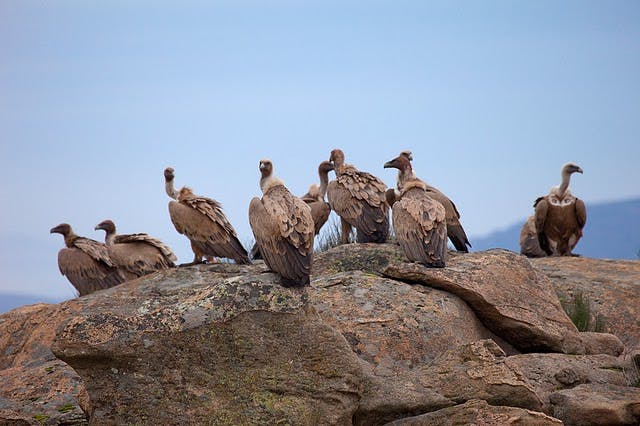The griffon vultures that we GPS-tagged in the summer of 2019 have generated huge amounts of data which had to be processed to reveal the most interesting insights and patterns. Here is a summary of the main findings that emerged from data about the behaviour of 4 of the tagged birds. The analysis was performed by our partners Sara Aliácar, André Couto, Carlos Pacheco, João Neves and João Paulo Silva.
Mortality
Almofala, one of the griffon vultures we tagged in the summer of 2019 was found dead after the tracking data suggested it had not moved for several days. Although this is unfortunate, events like this can lead to important insights into the causes of mortality in the population. In this case, the bird appears to have died of natural causes because the necropsy showed no evidence of shooting or poisoning.
The remaining vultures (Algodres, Brava, and Jardo) stayed active until the GPS signal was lost allowing a large amount of valuable information to be collected.

Feeding
Birds were tracked for an average period of 148 days and the combined position and accelerometer data have allowed 160 potential feeding events to be identified. This has given us the first insight into their foraging behaviour.
The great majority of feeding events took place in Spain. Interestingly, abandoned carcasses in extensive farming areas appear to be providing most of the food for these griffon vultures. However, there was also evidence of feeding in natural areas and intensive or semi-intensive farming areas. Only a small percentage of the feeding events took place at vulture feeding stations, which are maintained to provide supplemental feeding for endangered scavengers such as the Egyptian vulture.

Interactive map
This interactive map was created with the data from 4 of the Griffon vultures tagged in the summer of 2019. You can follow the journey of each individual and see the distance travelled up to that point (by clicking on the bird's icon).